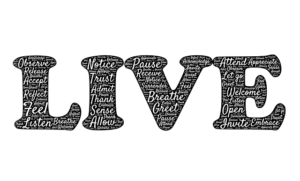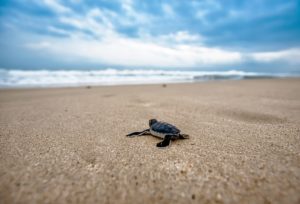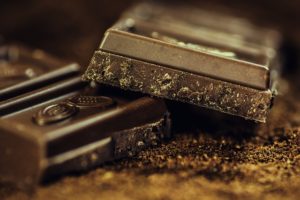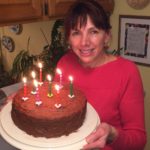Celebrate Your Progress
We are nearly eight weeks into 2018. This means that if you began a “new you” program of any kind on New Year’s Day, you’ve been at it for a good amount of time.
Where are you today? I don’t mean geographically. I mean, where are you with whatever ideals, goals, plans, and resolutions that you made January 1? Have you made progress? Are you stuck? Has the fun of doing something new worn off? Are you moving along at a good pace?
Where are you today?
February can be a challenge for most of us. We may not be as excited as we wish we were about  our new endeavors. Perhaps we think we SHOULD be making more progress or that there is such a small amount of improvement, it doesn’t matter.
our new endeavors. Perhaps we think we SHOULD be making more progress or that there is such a small amount of improvement, it doesn’t matter.
It does matter. Everything matters. Every tiny bit of improvement you make adds up over time and leads to massive success! Congratulations for being here!
One of my goals this year is to meditate daily. When I look at my meditation tracker, the daily part did not happen. In fact, my focus on this habit has not been consistent at all. OOPS!
Here’s the good news: I have meditated more in the last two months than I probably did all last year. That is success and I feel as though I am making progress. Not only that, I am also practicing avoiding the SHOULDS. This means having the mindset that I look forward to meditating, instead of I SHOULD do this because it helps me focus, slows me down, and allows me to connect with the Divine. I’m experiencing more of “I feel like” instead of “I have to.” Progress. Slow. Progress.
In the world of food, it could go something like this: perhaps you are practicing eating more greens. You had a spinach salad almost everyday in January and now, you are growing weary of spinach salad. It feels like a SHOULD. Well, in a way it is because we should eat lots of vegetables for all the reasons you know to be true. Let’s face it; most of us know what we need to do—what we should do—to be healthier. Why don’t we do it? It is easier to revert back to our old habits when we get busy or stressed. Then it feels too hard to move forward. Hence, the vicious cycle. Lose the weight; gain the weight; rinse and repeat.
Today, think about whatever it is that you felt excited about doing January 1, 2018. Reflect on  what you have been working on and what it is you’re doing that makes you feel good. Maybe you worked out twice a week as opposed to never. Maybe you have been cutting back on the cookies or the beer. Maybe you are simply noticing that you feel a bit more energy when you eat that spinach salad. Whatever it is, celebrate your success in some way that makes you smile. If there is more you would like to accomplish, make note of it and post it where you see it daily. Let’s move forward together and be a little bit better than we were last year!
what you have been working on and what it is you’re doing that makes you feel good. Maybe you worked out twice a week as opposed to never. Maybe you have been cutting back on the cookies or the beer. Maybe you are simply noticing that you feel a bit more energy when you eat that spinach salad. Whatever it is, celebrate your success in some way that makes you smile. If there is more you would like to accomplish, make note of it and post it where you see it daily. Let’s move forward together and be a little bit better than we were last year!
“Behold the turtle. He makes progress only when he sticks his neck out.”–James Bryant Conant



 do the work, he had to go within. What a great lesson. How many times do we seek important answers to life outside ourselves, when the answers lie deep within the silence of our hearts?
do the work, he had to go within. What a great lesson. How many times do we seek important answers to life outside ourselves, when the answers lie deep within the silence of our hearts? meaningful conversations with your friends and family face-to-face? We’re planning to connect with friends (in person!) we haven’t seen for a time because “life gets in the way.” If the news makes you crazy, what if you spend some time in quiet solitude each morning? Is mindless TV taking you away from reading a book of interest or pursuing your dream to learn a new skill? Fast in a way that serves your soul, and it will benefit your entire being.
meaningful conversations with your friends and family face-to-face? We’re planning to connect with friends (in person!) we haven’t seen for a time because “life gets in the way.” If the news makes you crazy, what if you spend some time in quiet solitude each morning? Is mindless TV taking you away from reading a book of interest or pursuing your dream to learn a new skill? Fast in a way that serves your soul, and it will benefit your entire being. and rich foods are traditionally eaten (yes, yet another excuse to stray), before the Christian Lenten fast that begins on Ash Wednesday, AND Valentine’s Day this year. The last time this occurred was in 1945. Now, the double holiday may present a bit of a quandary for those who follow the rules of fasting for the beginning of Lent. Catholics typically eat only one full meal and abstain from meat. This means surf without the turf—did I get that right? Anyway, no steak with your sweetheart is what that means.
and rich foods are traditionally eaten (yes, yet another excuse to stray), before the Christian Lenten fast that begins on Ash Wednesday, AND Valentine’s Day this year. The last time this occurred was in 1945. Now, the double holiday may present a bit of a quandary for those who follow the rules of fasting for the beginning of Lent. Catholics typically eat only one full meal and abstain from meat. This means surf without the turf—did I get that right? Anyway, no steak with your sweetheart is what that means. about two weeks before Lent begins. New Orleans is the American city most known for its “Carnival” and parties. There were lots of parades, costumes, beads, delicious food, and celebrating. No, I did not do anything crazy to get those beads! The people on the floats throw them like Hoosiers throw candy. It’s all big fun. Fat Tuesday has been a legal holiday in Louisiana since 1875. Ash Wednesday marks the beginning of the Lenten season leading up to Easter, which is April 1 this year. No fooling.
about two weeks before Lent begins. New Orleans is the American city most known for its “Carnival” and parties. There were lots of parades, costumes, beads, delicious food, and celebrating. No, I did not do anything crazy to get those beads! The people on the floats throw them like Hoosiers throw candy. It’s all big fun. Fat Tuesday has been a legal holiday in Louisiana since 1875. Ash Wednesday marks the beginning of the Lenten season leading up to Easter, which is April 1 this year. No fooling. favor and join me in the Birth Month celebration.
favor and join me in the Birth Month celebration.